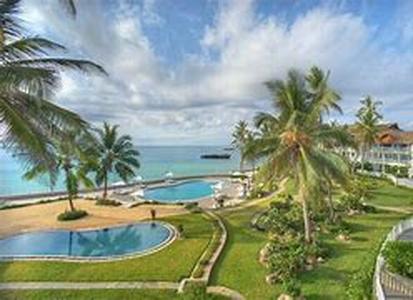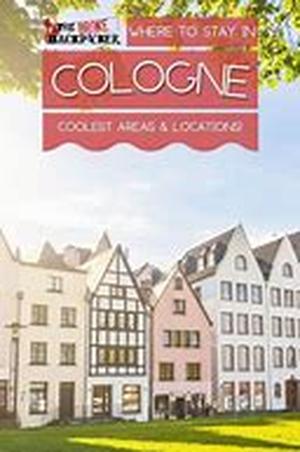
In All My Explorations Of Toronto Over The Last Few Years I Have Learned That In Addition To Numerous World-class Sights And Attractions, Toronto Has Many Lesser Known Nooks And Crannies That Are Full Of History, Interesting Stories And Anecdotes. One Of The Best People To Learn From About The Twists And Turns Of Torontos History Is Bruce Bell, A Well-known Author, Playwright, Actor, Standup Comedian Who Is Also A Passionate Historian And Has Become One Of Torontos Most Well-recognized History Experts.The Story Of How I Met Bruce Is Also Quite Intriguing: My Brother, Who Happens To Live In Austria, Was Reading A German Travel Magazine That Was Featuring A Story About Bruce, So He Called Me Up And Said That There Is This Guy That Is Doing All These Neat Walking Tours Through Toronto And Thats How I Connected With Bruce Through A European Detour. Over The Past Couple Of Years I Have Taken Two Of His Tours, Covering The Downtown Area And Featuring A Culinary Exploration Of Torontos Famous St. Lawrence Market. I Have Always Enjoyed The Experience And Wanted To Do Another Tour With Bruce For A While.Well, I Figured It Was Definitely Time For More Entertaining And Informative Explorations Of Toronto; This Time It Was Going To Be Chinatown-Kensington, One Of Torontos Most Vibrant And Fascinating Neighbourhoods. So I Called Up Bruce And Said Lets Do Another Tour. To Share The Experience I Brought Out Six Of My Friends And We Met Yesterday At 6:30 Pm At One Of Torontos Modern Architecture Icons: The OCAD Building At 100 McCaul Street, Just South Of The University Of Toronto Campus. The OCAD Building, I Call It The Gift Box On Stilts, Is Part Of The 2004 Redevelopment Of The Campus Of The Ontario College Of Art Design. The Sharp Centre For Design Has A Unique Table Top Structure Which Has Quickly Become One Of Torontos Most Recognizable Landmarks.The Grange, Undergoing Renovation, Situated Next To The AGOWe Met In The Butterfield Park Area, Surrounded By The Stilts Holding Up The Table Top Of This Extraordinary Building. From There We Headed West Into A Green Space That Features Torontos Oldest House: The Grange Was Built In 1817 For DArcy Boulton Jr., A Member Of One Of Early Torontos Most Prominent Families Who Owned About 2000 Acres Of Land In The Area. The Classical Mansion Reflects The British Architectural Traditions Of The 18th Century. Today, The Grange Is Owned By The Art Gallery Of Ontario And Is In The Process Of Being Renovated And Integrated Into The AGOs Frank Gehry-led Redesign.After Leaving This Park We Walked North On Beverley Street Which Features Several Yellow-brick Mansions Of Some Of Torontos Most Pre-eminent Families, The Family Compact The True Power Brokers Of The Early 19th Century. Families Such As The Cawthras And Others Owned Huge Tracts Of Land In What Is Todays Downtown Toronto. The Bolton Family Even Owned A Private Racetrack Near The Intersections Of Dundas And Beverley And Many Formal Social Occasions Were Celebrated On Their Enormous Estate. We Also Passed By A Former Hotel Which Dates Back To 1822, One Of The Very Few Hotels Left From That Era Which Today Is A Mens Residence.Our Stroll Took Us Westwards On Baldwin Street, A Street With A Mix Of Imposing Mansions, Historic Apartment Buildings And Narrow Victorian Homes With Attractive Architectural Details And Amazingly Intricate Woodwork. Bruce Stopped At A Mansion Of One Of Torontos Most Influential Historic Figures: George Brown (1818 To 1880) Was A Scottish-born Canadian Journalist, Politician And One Of The Fathers Of Canadas Confederation. He Was Also The Founder And Editor Of The Toronto Globe Newspaper Which Today Is Known As The Globe And Mail.Bruce Enlightened Us That George Brown Was An Important Figure In The Underground Railroad, A Network Of Secret Routes And Safe Houses That Allowed African Slaves To Escape From The United States To Canada In The 19th Century. Ironically, As Much As George Brown Supported The Cause Of Freeing Black Slaves, He Remained A Staunch Anti-Catholic. Bruce Elaborated That While The United States Was Characterized By An Ongoing Conflict Between Blacks And Whites, Early Canadas Conflicts Mostly Unfolded Between Protestants And Catholics. Bruce Added That In 1880 George Brown Was Shot By One Of His Former Employees At The Globe Newspaper, A Certain George Bennet Who Had Been Fired From His Job For Drunkenness. Although George Brown Only Suffered A Leg Injury At The Time He Died About 6 Weeks Later From The Wound.Just A Few Steps Further West We Saw The Mansion Of Robert Baldwin, A Member Of The Parliament Of Upper Canada And A Key Public Figure Around The Time Of The 1837 Uprising Of The Toronto Population Against The Entrenched British Power Structure. The Unsuccessful Upper Canada Rebellion Of 1837 Was An Uprising Against The British Colonial Government, Particularly About The Issue Of Land Allocation. Most Of The Land In And Around The Old City Of York Was Owned By The Family Compact, A Group Of Extremely Wealthy Anglican Conservative Families That Represented Canadas Elite At The Time. Robert Baldwin Was Instrumental In Establishing Responsible Government, Which Advocated Increased Independence From Britain And Self-government For Upper Canada.We Had Finally Arrived On Spadina Avenue, The Expansive North-south Artery That Is The Centre Point Of Torontos Chinatown. This Historic Neighbourhood, One Of Three Chinatowns Within Torontos City Boundaries, Is Centered Around Spadina And Dundas And Is The Largest Chinese Shopping Area In The City. Old Chinatown Is Actually One Of North Americas Largest, Not Surprisingly As Toronto Features The Second Largest Chinese Population In Canada After Vancouver.Recent Years Have Seen A Migration Of Chinese Immigrants To The Suburbs Which Has Led To The Closure Of Some Of The Local Restaurants. Many Former Chinatown Residents, Originally From Mainland China, Taiwan And Hong Kong Have Moved Outside The Citys Boundaries And The Void Has Been Filled By Many Ethnic Chinese People From Vietnam. As A Result An Increasing Number Of Store Signs Are Now In Vietnamese, In Addition To The Well-established Chinese Stores.Goods Sold Include Fruits And Vegetables, Meat And Seafood, Low Cost Clothing And General Merchandise, All Of Which Are Sold At Very Reasonable Prices. Recently There Has Been A Noticeable Local Increase In Latin American Immigrants, Testament To The Fact That Torontos Demographics Continue To Be In Flux.The Same Story Applies Even More To Torontos Kensington Area, Roughly Bounded By Spadina Avenue, College Street, Queen Street And Bellevue Avenue. As Bruce Explained, It Is One Of Torontos Most Ethnically Diverse And Eclectic Neighbourhoods And Has Been Attracting Immigrants From Different Countries Of Origin For The Last 130 Years Or So. Originally The Denison Estate, The Kensington Area Became A Residential Area For Irish And Scottish Immigrant Labourers. The Small Working-class Houses In This Historically Inexpensive Area Have Been Inhabited By Successive Waves Of Immigrants From Different Places. From 1910 Onwards, Jewish Immigrants From Eastern Europe As Well As Some Italians Started To Stream Into The Area. The Entire Kensington Area Became Known As The Jewish Market, And About 60,000 Jewish Residents Lived Here In The 1920s And 1930s Who Worshipped In About 30 Local Synagogues.We Stopped At The Minsker Synagogue At 10 St. Andrew Street, Home Of The Congregation Anshei Minsk, Torontos Downtown Synagogue. Construction Of The Synagogue Commenced In 1922 And Was Finally Completed In 1930. As A Result Of The Out-migration Of Many Of The Jewish Residents From Kensington, Today It Is One Of The Few Synagogues Still In Active Operation In Downtown Toronto.





